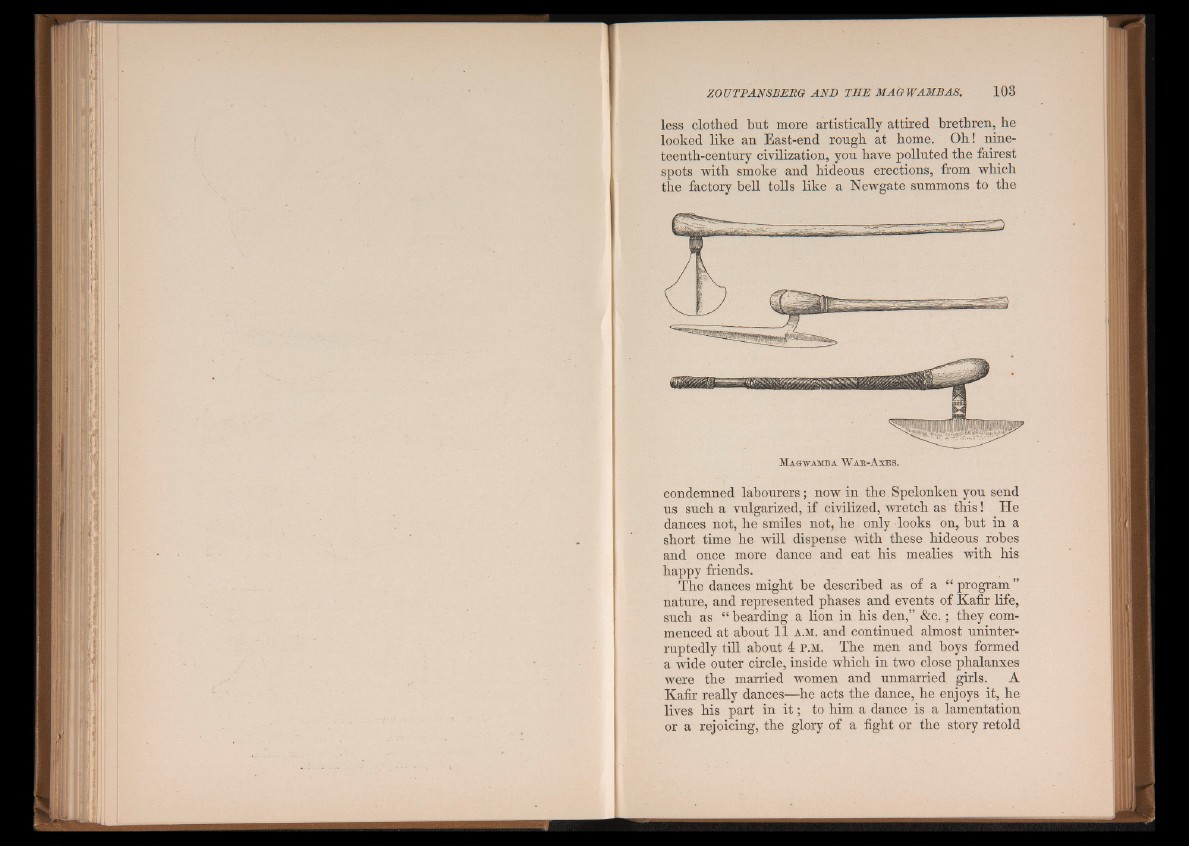
H M
less clothed but more artistically attired brethren, he
looked like an East-end rough at home. Oh! nineteenth
century civilization, you have polluted the fairest
spots with smoke and hideous erections, from which
the factory bell tolls like a Newgate summons to the
Magwamba W a k -A xe s.
condemned labourers; now in the Spelonken you send
us such a vulgarized, if civilized, wretch as th is! He
dances not, he smiles not, he only looks on, but in a
short time he will dispense with these hideous robes
and once more dance and eat his mealies with his
happy friends.
The dances might be described as of a “ program ”
nature, and represented phases and events of Kafir life,
such as “ bearding a lion in his den,” &c.; they commenced
at about 11 A.M. and continued almost uninterruptedly
till about 4 p .m. The men and boys formed
a wide outer circle, inside which in two close phalanxes
were the married women and unmarried girls. A
Kafir really dances—he acts the dance, he enjoys it, he
lives his part in i t ; to him a dance is a lamentation
or a rejoicing, the glory of a fight or the story retold